Tamron SP 70-200 mm f/2.8 Di VC USD
8. Vignetting
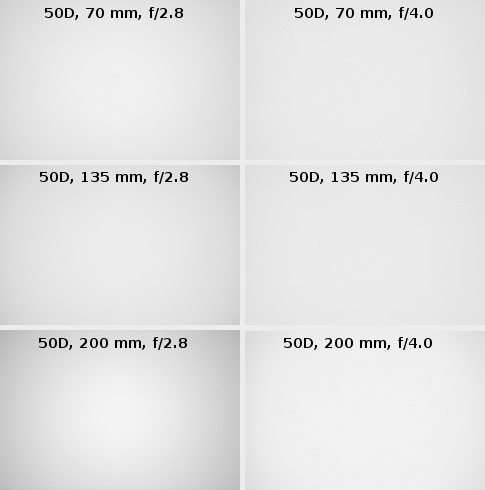
At shorter focal length there are no problems at all. At 70 mm and at the maximum relative aperture the brightness loss in the frame corners amounts to just 13% (-0.40 EV) and it becomes imperceptible already by f/4.0 where it reaches 4% (-0.13 EV). A very similar situation can be noticed at 135 mm focal length. By f/2.8 we deal with 15% (-0.48 EV) vignetting which decreases to 5% (-0.14 EV) on stopping down to f/4.0.
Please Support UsIf you enjoy our reviews and articles, and you want us to continue our work please, support our website by donating through PayPal. The funds are going to be used for paying our editorial team, renting servers, and equipping our testing studio; only that way we will be able to continue providing you interesting content for free. |
- - - - - - - - - - - - - - - - - - - - - - - - - - - - - - - - - - - - - - - - - - - - - - - -
The biggest chances to see any vignetting you get at 200 mm. Here at the maximum relative aperture the light fall-off in the frame corners amounts to 25% (-0.82 EV). Fortunately already by f/4.0 that aberration becomes imperceptible because it decreases to 9% (-0.28 EV)
Let’s check now the level of vignetting on full frame. The appropriate thumbnails are presented below.
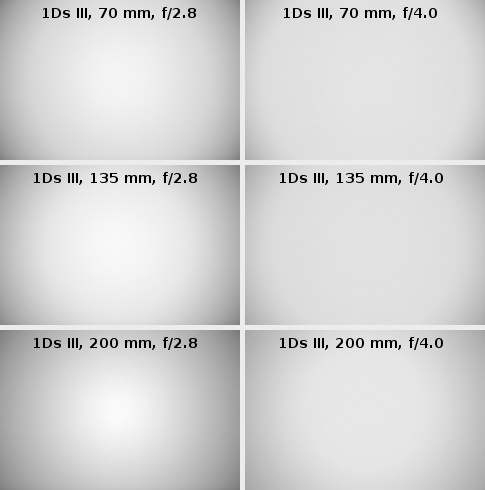
According to our expectations there are much more problems here. They start already at the shortest focal length where, at the maximum relative aperture, the vignetting amounts to 47% (-1.84 EV). That value decreases with the stopping down: by f/4.0 it reaches still noticeable level of 26% (-0.86 EV), by f/5.6 it gets to 20% (-0.65 EV) and by f/8.0 it decreases to 14% (-0.44 EV). The vignetting becomes imperceptible only by f/11, where it is 8% (-0.25 EV).
At 135 mm focal length the situation is almost identical. The values you get are either the same as at 70 mm or they differ by just 1%. As a formality we list them: f/2.8: 47% (−1.83 EV), f/4.0: 26% (−0.86 EV), f/5.6: 19% (−0.61 EV), f/8.0: 13% (−0.42 EV) and f/11: 7% (−0.22 EV).
Once again the worst situation you see at 200 mm. At the maximum relative aperture you lose even 50% of light (-2.02 EV). By f/4.0 the lens already performs much better as the vignetting amounts to 28% (-0.96 EV). The aberration is still visible by f/5.6 where it goes to 21% (-0.67 EV). The problems disappear by f/8.0 and f/11 where we got respectively 14% (-0.44 EV) and 8% (-0.23 EV).
It would be difficult to praise the Tamron in this category. The rivals from Canon and Nikon fare better with their vignetting level not exceeding 34-39%. Only the Sigma, along with the Tamron, lags behind as the Sigma’s vignetting increased to 44% at 70 mm and to 49% at 200 mm.
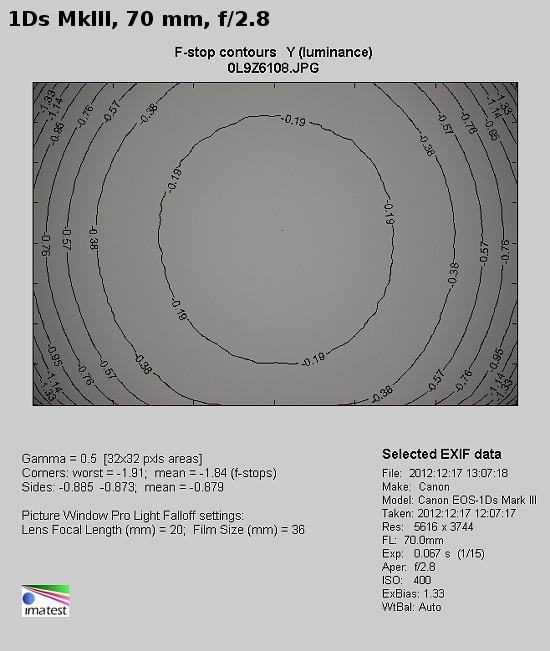 |
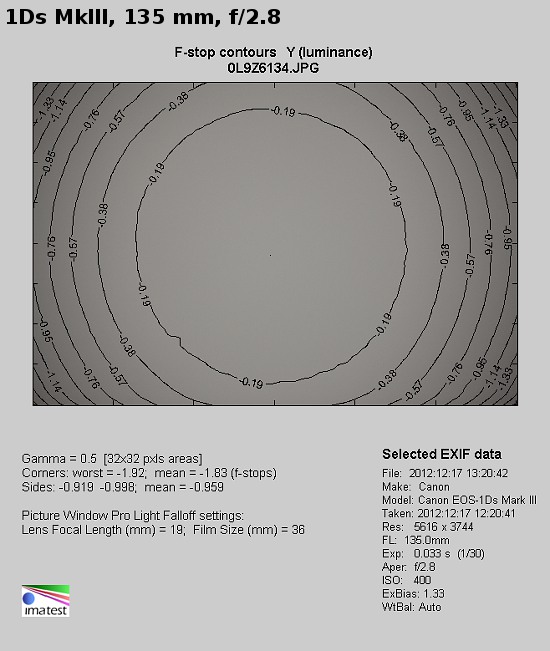 |
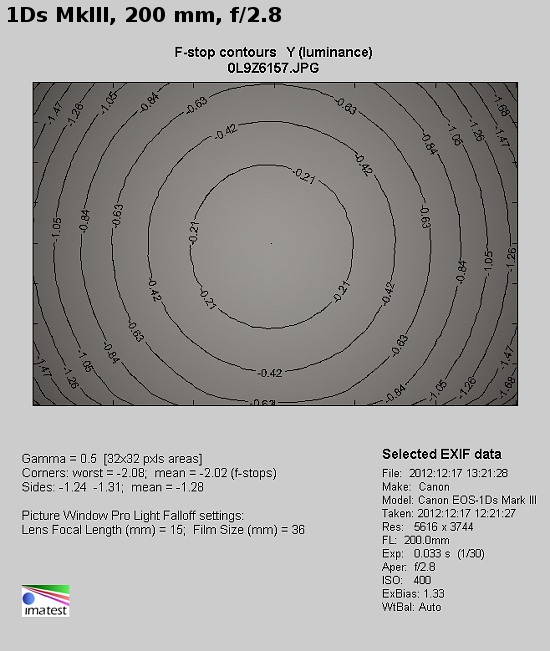 |






